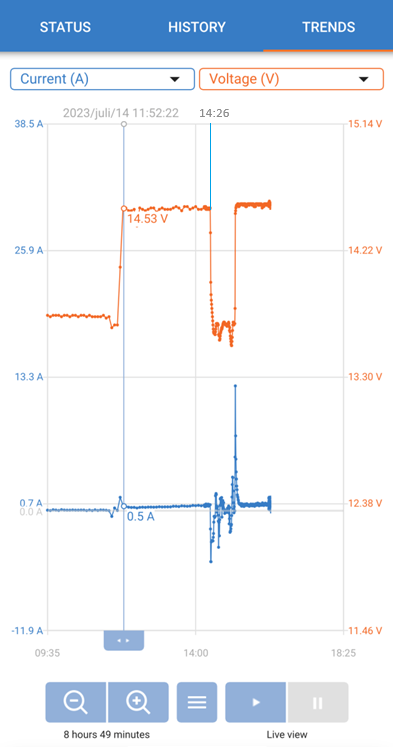I have during two year got three Victron AGM Deep Cycle, 110Ah, BAT412101084, batteries damaged. They have been connected to Ctek D250SA-Smartpass120 charging system in my boat.
The batteries have now a measured 20C to around 10Ah. The CCA i still measured to over 500A and have a internal resistance of 4mohm.
I suspect that the chargers have over charged the batteries and the electrolyte is cooked. I have a installed Victron BMV-712 that could measure at one occasion that the D250A went up in absorption mode in 3 hours. The current thorough the three batteries was below 0.5A and the voltage 14.5V. The batter was fully charged before this started.
Are there any way to determine how the batteries have been damaged?
Is there any way to diagnose the batteries so I can be sure that they are over charged and has been gassed out? I'm prepared to open the battery to make the analysis.

